Hey all! Real Farmer Jeff here.
The biggest point of learning that I’ve had this gardening season is the absolute importance of aeration in the soil. I haven’t had a lot of struggles with this in the past, but this year has been different.
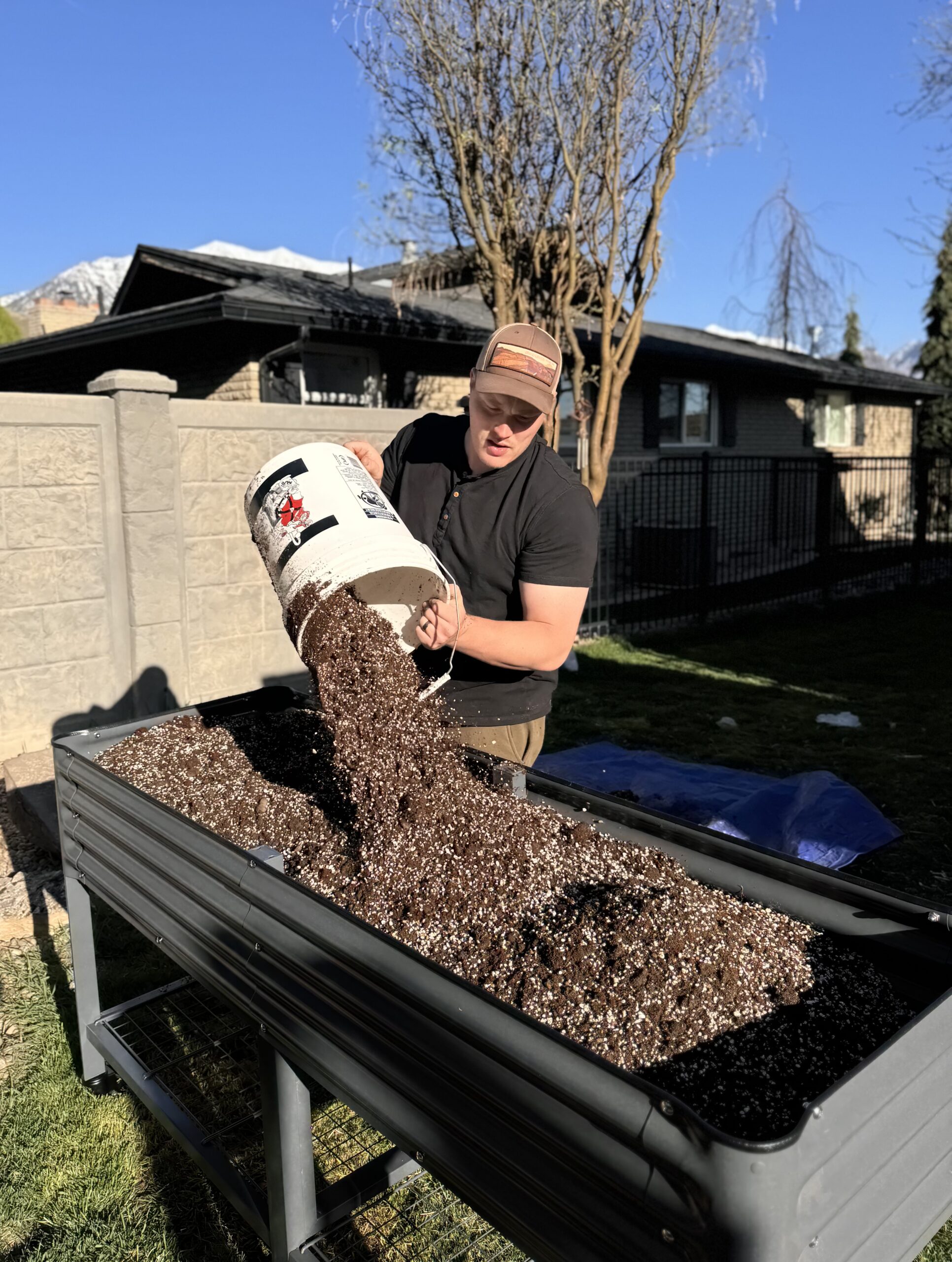
Creating soil with the right texture can be tricky because initially the soil might seem airy. However, if you buy low-quality soil or are working with the native soil for an in-ground garden, you may need to amend it to achieve the ideal composition. For compacted or raised beds, your soil needs:
- A balance of organic matter (for fertility & life)
- Inorganic aerators to prevent compaction and improve drainage
- Long-term structure and microbe-friendly environment
A balanced raised bed mix prevents soil from turning muddy in winter or hard in summer. Smart amendments create healthy, productive soil that lasts. In this post, I’ll share what I did this season to improve my garden and the amendments I recommend for ideal soil texture, drainage, and aeration.
Table of Contents
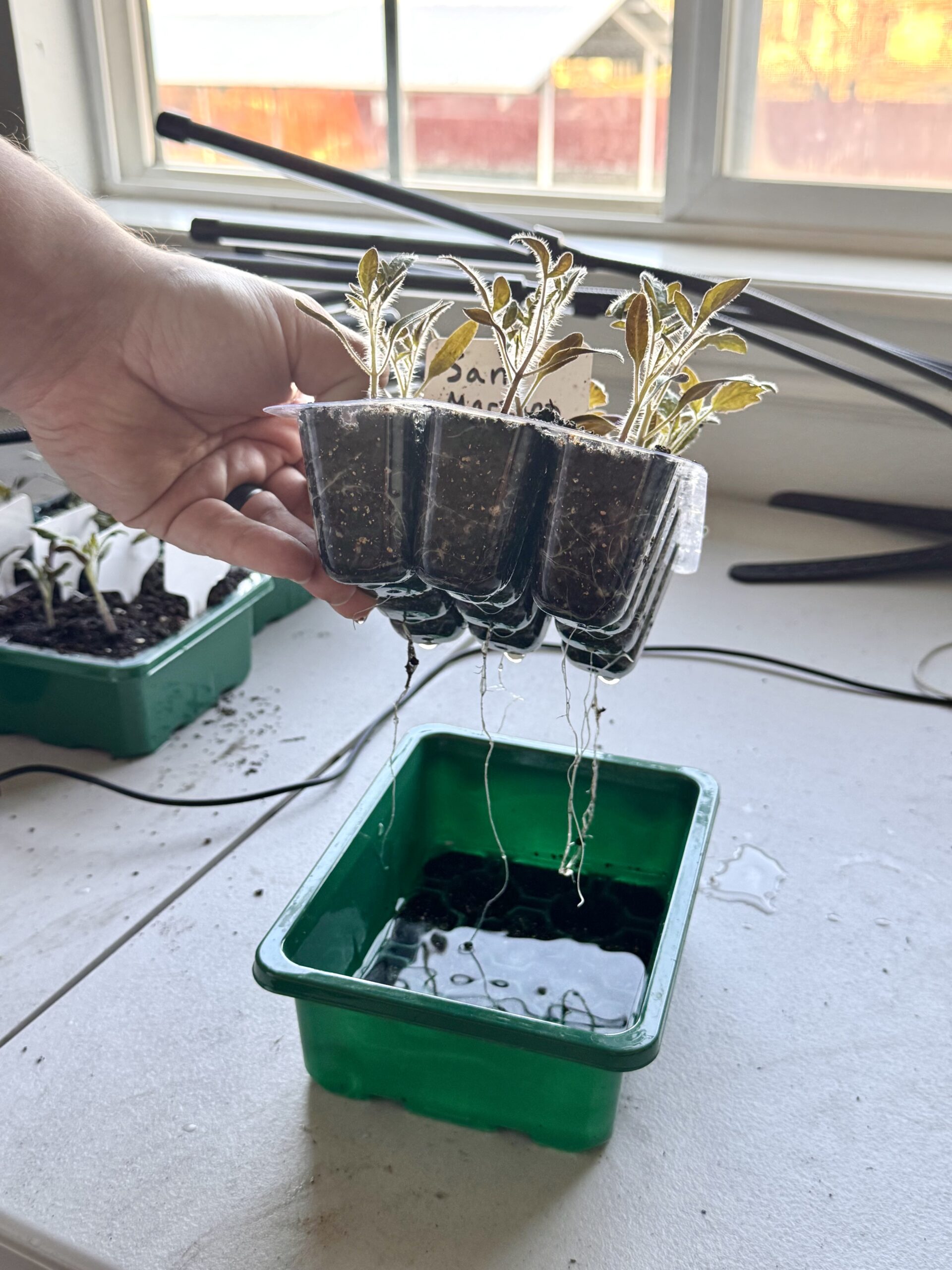
Importance of Proper Aeration & Drainage
Proper Aeration:
Proper aeration in soil means there’s enough space between soil particles to allow air (especially oxygen) to reach plant roots and soil microbes.
Soil needs oxygen just as much as it needs water. Oxygen is vital for…
- Root Respiration: Roots need air to absorb nutrients.
- Beneficial Soil Life: Microbes, fungi, and earthworms all depend on oxygen.
- Preventing Root Rot: Poor aeration = anaerobic (low oxygen) conditions = disease-prone soil.
Compacted or poorly aerated soil creates:
- Stunted roots
- Waterlogging
- Fungal pathogens (e.g., Pythium, Phytophthora)
- Less nutrient uptake, even if soil is “fertile”
Proper Drainage:
Proper drainage in soil means excess water can flow away efficiently instead of pooling around plant roots.
Inadequate drainage leads to:
- Saturated root zones (which then leads to root suffocation)
- Salt buildup (especially in container and raised beds – this essentially draws water away from plant roots, making it harder for plants to absorb moisture)
- Soil structure breakdown over time
The goal is to create soil that holds moisture but drains freely, and has enough air pockets for healthy root development.
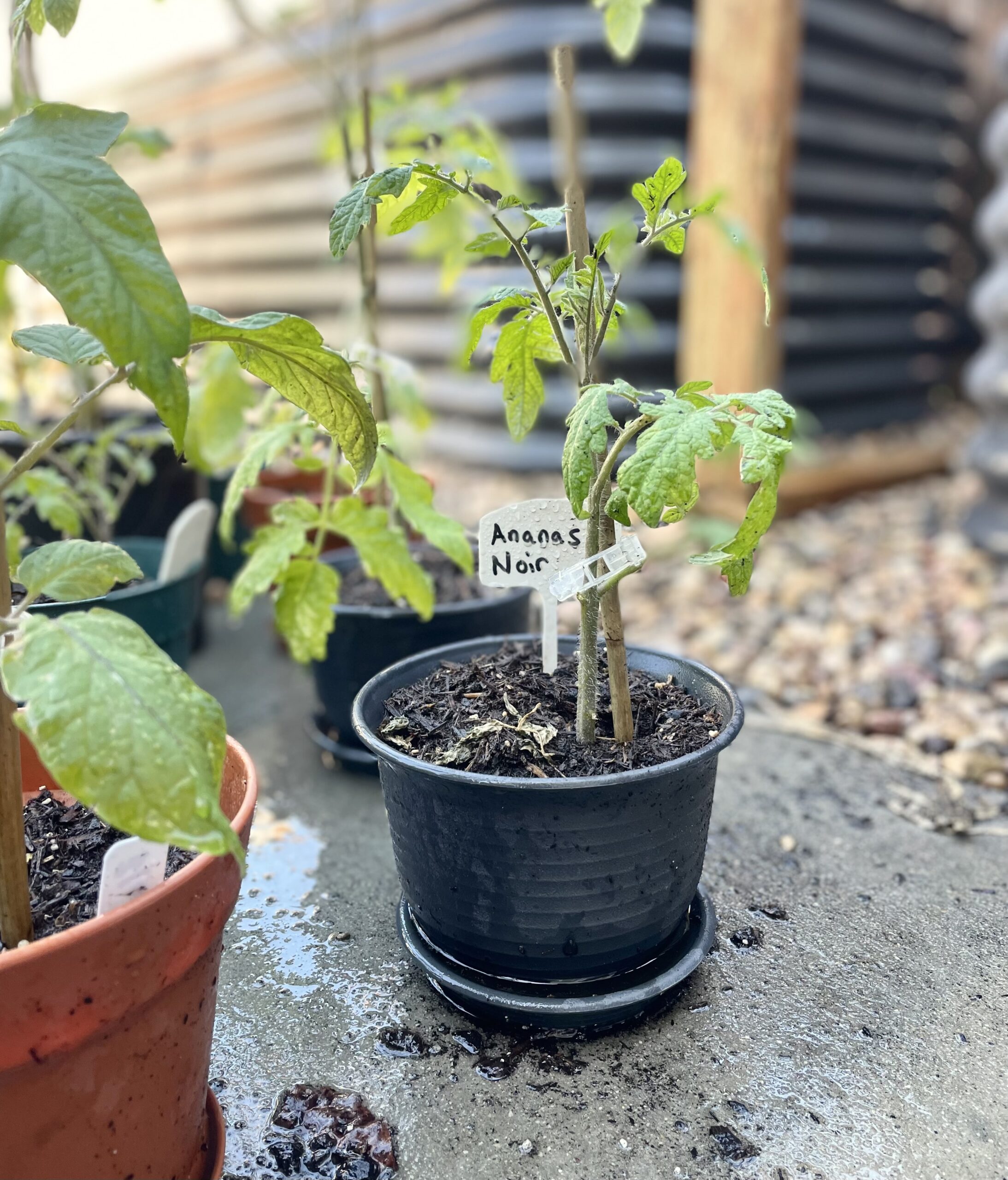
How to Mix Soil Amendments to Improve Drainage and Aeration
1. Loosen Existing Soil:
- Use a shovel or garden fork to break up compacted soil to at least 8 – 12 inches deep. Don’t skip this step! Amendments won’t help much if the base soil is still hard.
2. Choose Your Amendment Mix:
- Mix in 2 – 3 inches of amendments across the top and till/mix it into the top 8 – 10 inches.
- Keep reading this blog post for a breakdown of the benefits of each amendment. For a typical compacted garden bed, however, use a general base mix:
- 30-40% screened topsoil or native soil (well-broken up. This is the soil you start with)
- 30-40% compost (adds organic matter, nutrition, and microbes)
- 15% perlite or pumice (improves drainage + air pockets)
- 5-10% coarse sand (optional, only if heavy clay)
- Optional: Add up to 10% of peat moss, coco coir, vermiculite, or leaf mold for water retention
3. Water Thoroughly:
- After mixing, water well to help the materials settle and bond with native soil layers.
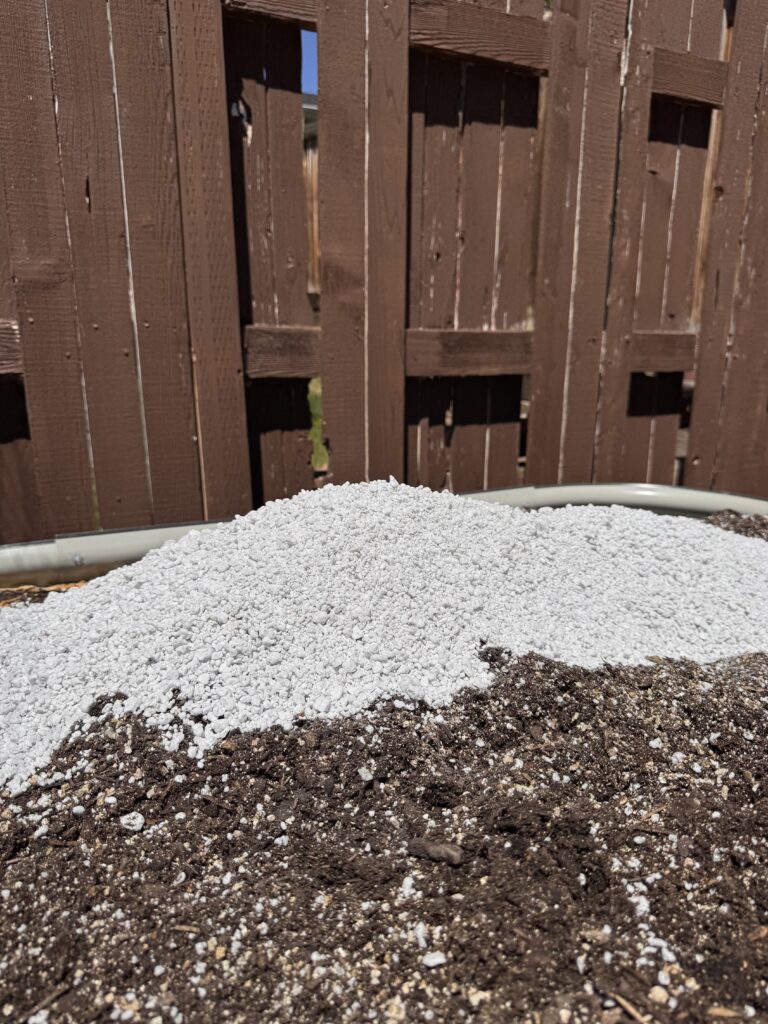
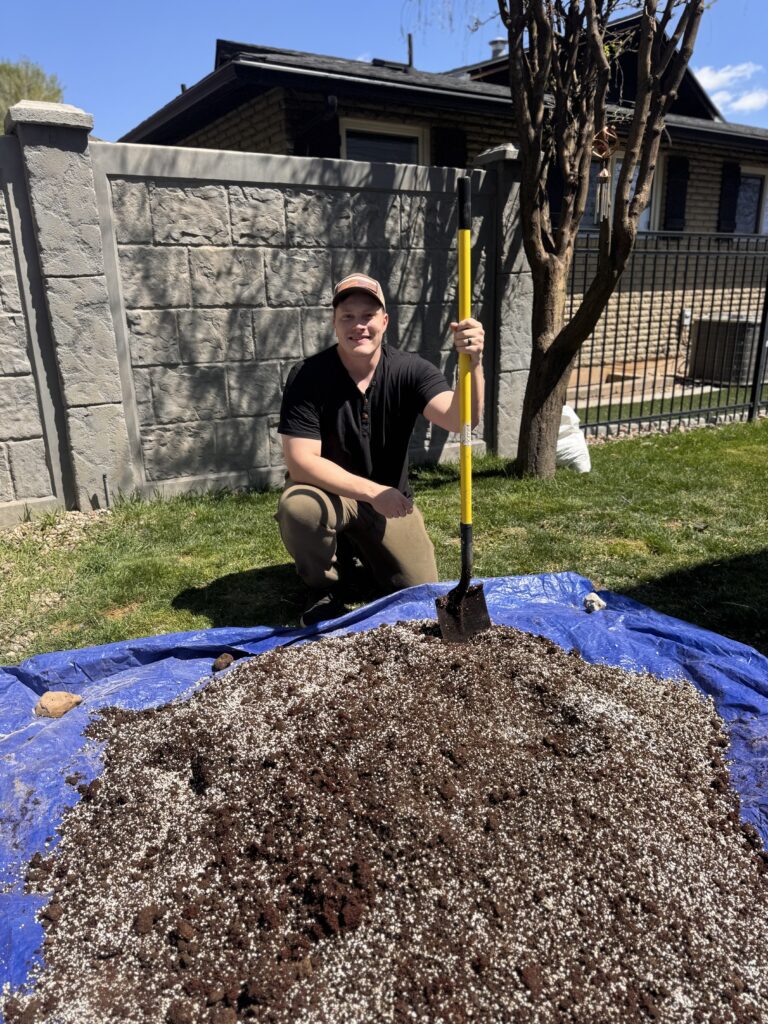
Key Points for Amending Raised Beds
Soil in raised beds can settle or compact more quickly due to gravity and limited surrounding support. However, the benefit is that you have complete control over the initial soil mix, allowing you to customize it for ideal texture, aeration, and drainage.
Key Points for Raised Beds:
- Use inorganic materials like perlite, pumice, and coarse sand for permanent aeration
- Avoid high volumes of materials like peat or coir that retain too much water and can compact
- Organic matter like compost is still vital for fertility and soil life
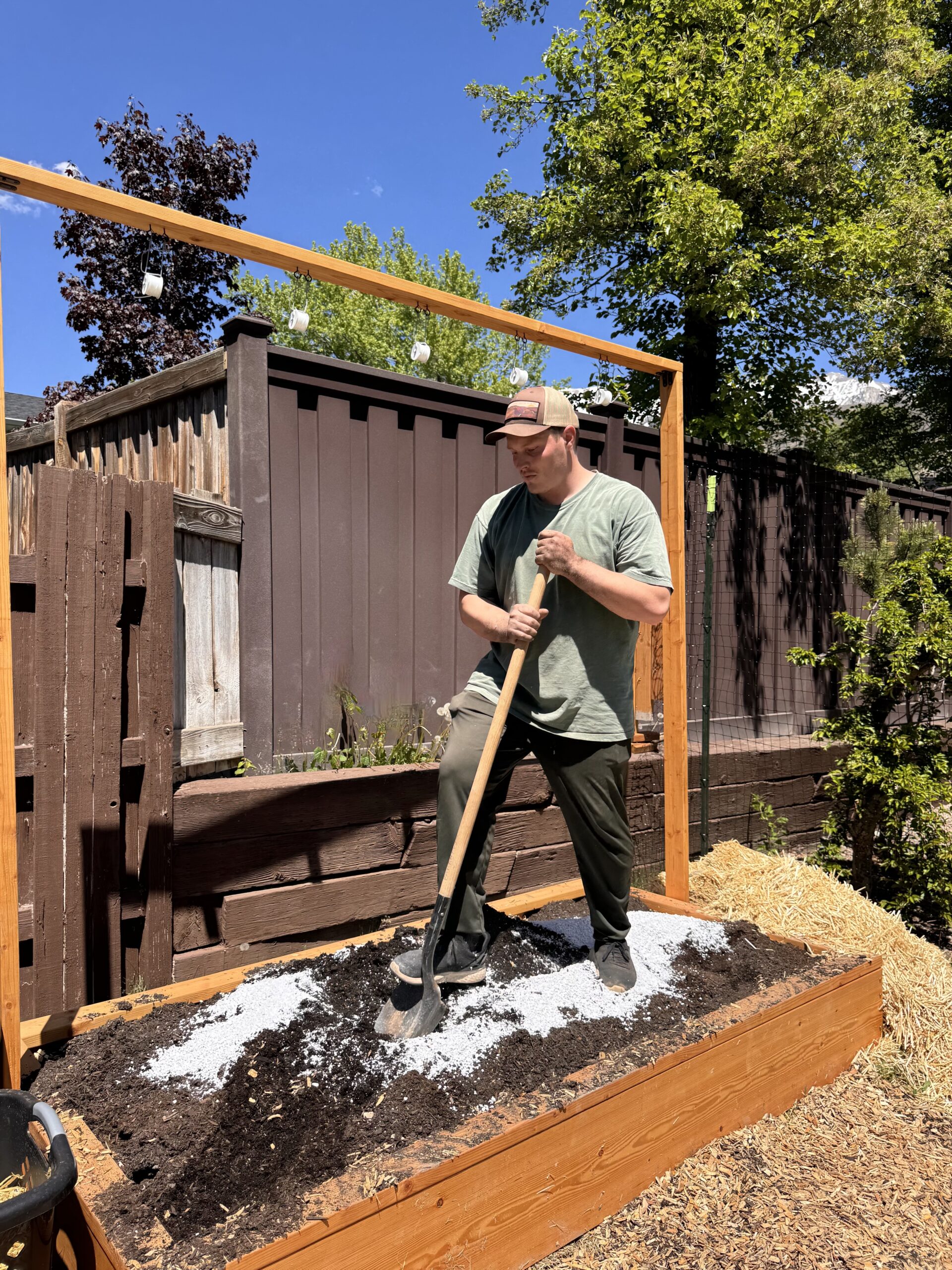
Common Soil Amendments
1. Perlite: White, lightweight, porous volcanic glass that expands when heated. Looks like tiny white beads. Perlite is best for heavy clay soils needing improved aeration and quick drainage.
Pros:
- Excellent drainage and aeration
- Very lightweight and easy to mix
- Sterile and pH-neutral
- Doesn’t break down over time
Cons:
- Dusty when dry (irritating to lungs)
- Provides no nutrients
- Not environmentally sustainable in large-scale use due to energy-intensive production
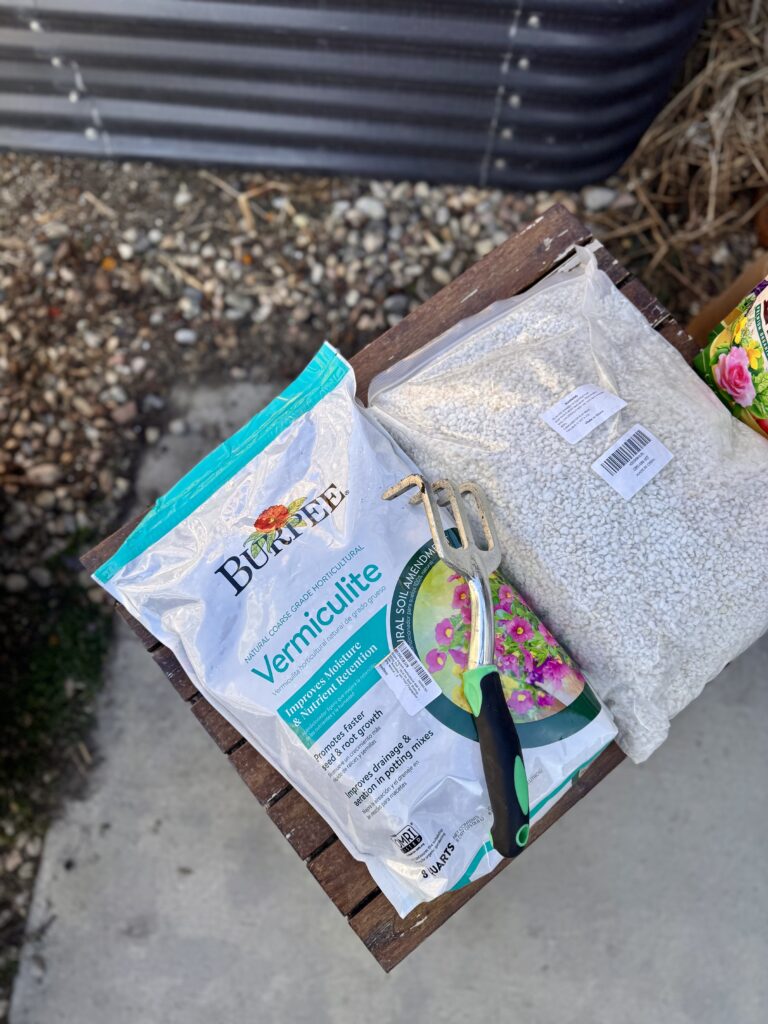
3. Sand (Coarse/Sharp Sand): Grainy mineral material from crushed rock or natural deposits; avoid fine sand. It’s best for mixing with clay-heavy soils only when using coarse sand.
Pros:
- Inexpensive and widely available
- Improves drainage if coarse (builder’s or horticultural sand)
- Long-lasting and inert
Cons:
- Must use coarse sand! Fine sand makes compaction worse.
- Very heavy
- Needs to be mixed well to avoid layering or stratification
- Does not retain nutrients or water
4. Pumice: Porous volcanic rock, heavier than perlite, with similar texture. Best for outdoor beds, succulent gardens, or areas prone to wind erosion.
Pros:
- Excellent drainage and aeration
- Heavier—stays in place in outdoor beds
- Long-lasting and doesn’t compact
- Slightly more sustainable than perlite
- Contains trace minerals
Cons:
- More expensive than perlite or sand
- Heavier to transport
- Availability can be limited in some regions
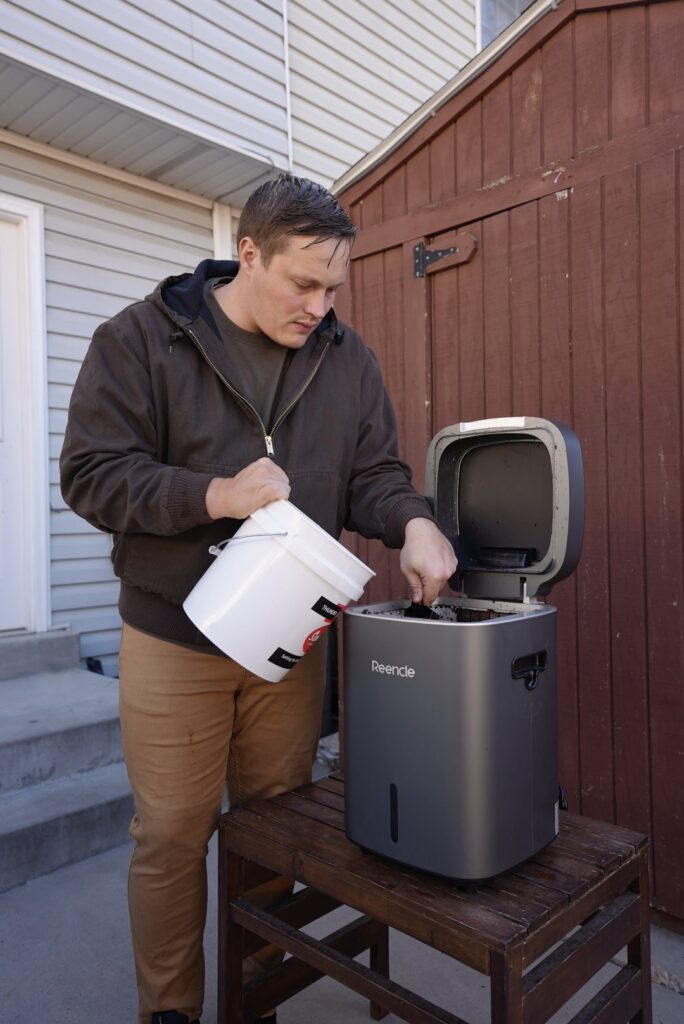
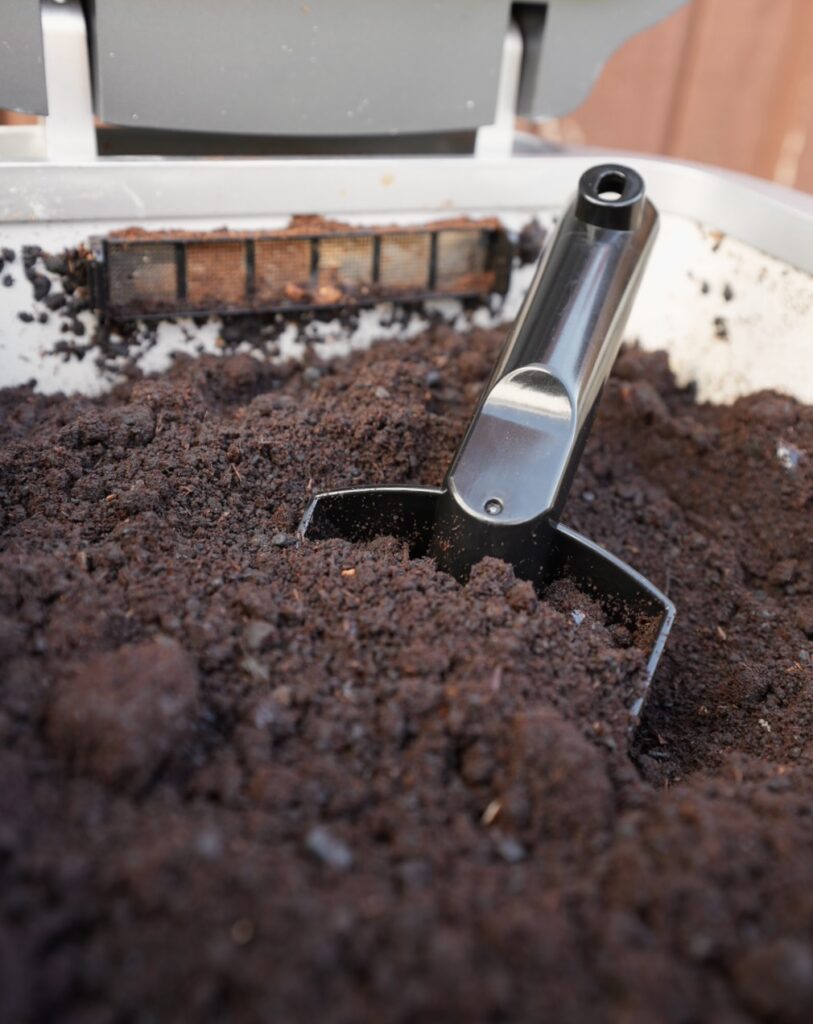
5. Compost: Decomposed organic material from kitchen waste, yard trimmings, or commercial sources. Best for improving overall soil structure, fertility, and microbial life.
Pros:
- Improves both structure and fertility
- Encourages microbial life
- Enhances water retention in sandy soils and breaks up clay
- Sustainable and often free or cheap
Cons:
- Doesn’t directly “aerate” soil as much as other amendments
- Quality varies; can introduce weed seeds or pathogens if not well-aged
- Can increase water retention too much if overused
Amendments Summarized
| Amendment | Role in Raised Beds | Tips |
| Perlite | Aeration, drainage | Mix thoroughly; can float or blow away in open beds |
| Pumice | Aeration, long-term stability | Heavier; ideal for raised beds in windy or wet areas |
| Coarse Sand | Drainage, structure | Only use sharp/horticultural sand (not play sand) |
| Compost | Fertility, microbe booster | Use in combination with inorganic material |
Thanks for reading along, guys!
If you enjoyed this blog post, be sure to check out my other gardening blog posts:
- How to Start a Garden on a Budget for Under $100
- Essential and Nice-to-Have Garden Products for Your Perfect Setup
- My Garden Setup: 3 Best Garden Containers for Every Gardener
- Understanding Garden Light and Shade: A Simple Guide
- How to Build a Homemade Trellis Using Cattle Panel
Be sure to follow me on social media for daily content and instructional videos about gardening!

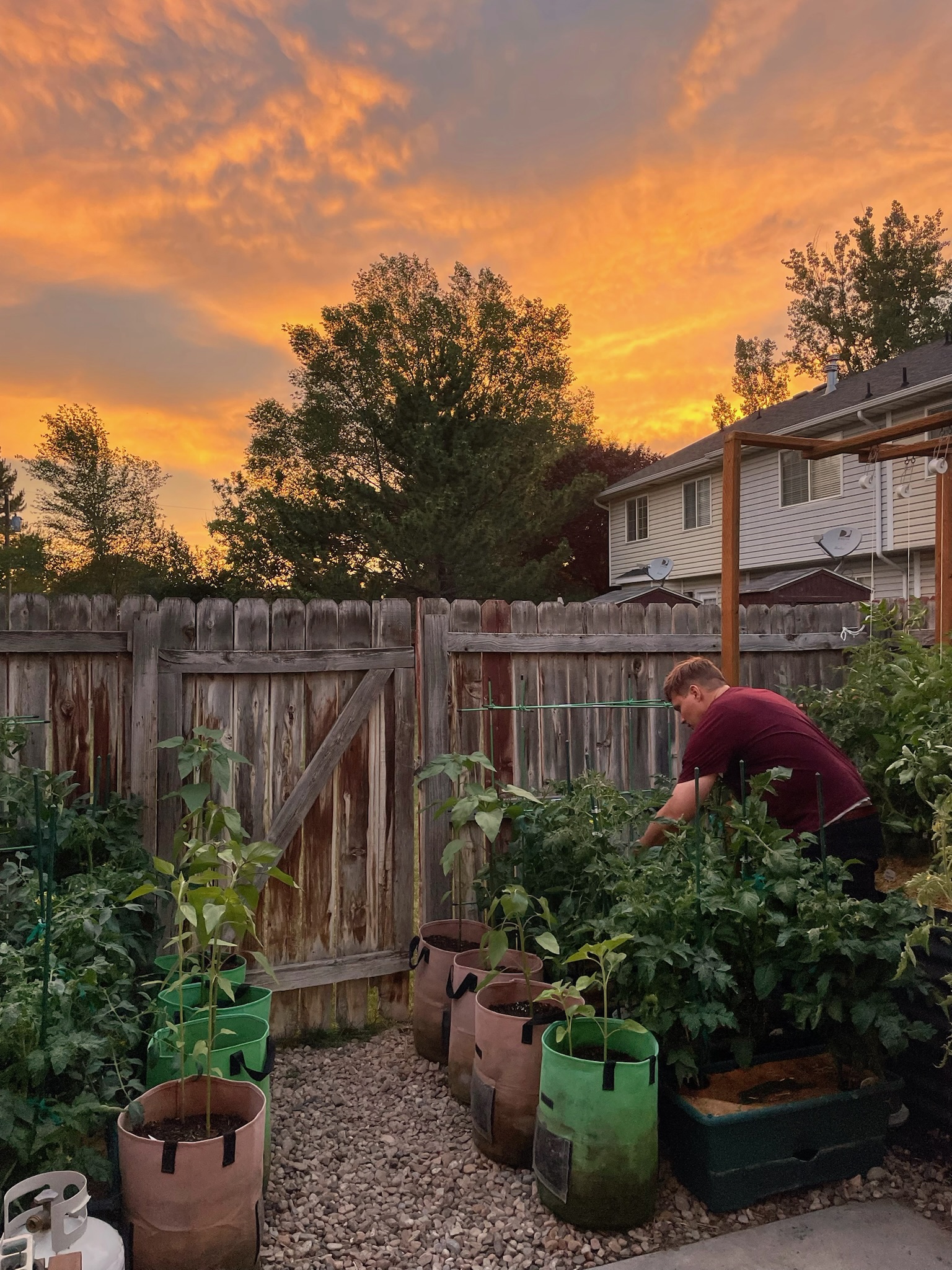



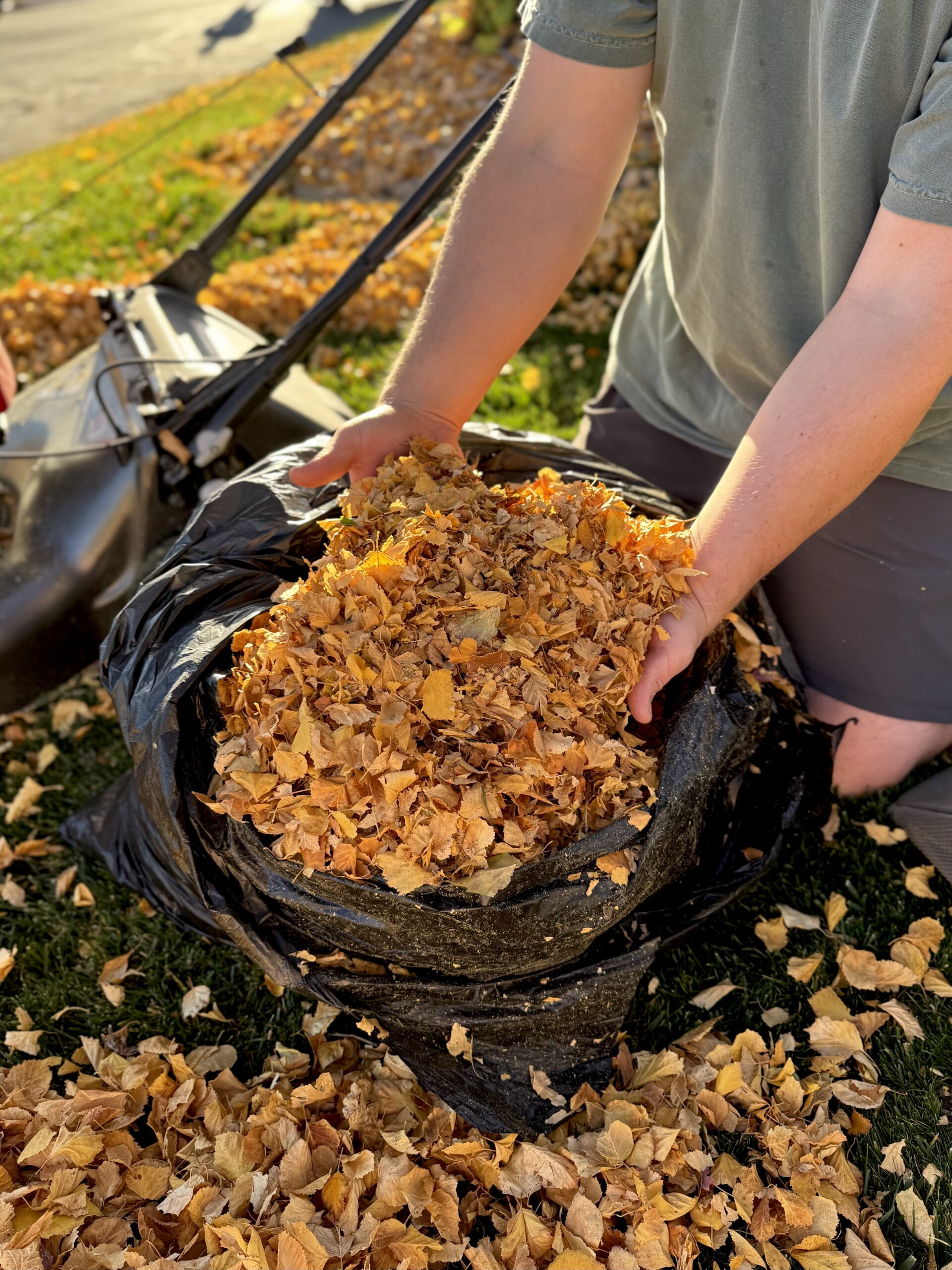
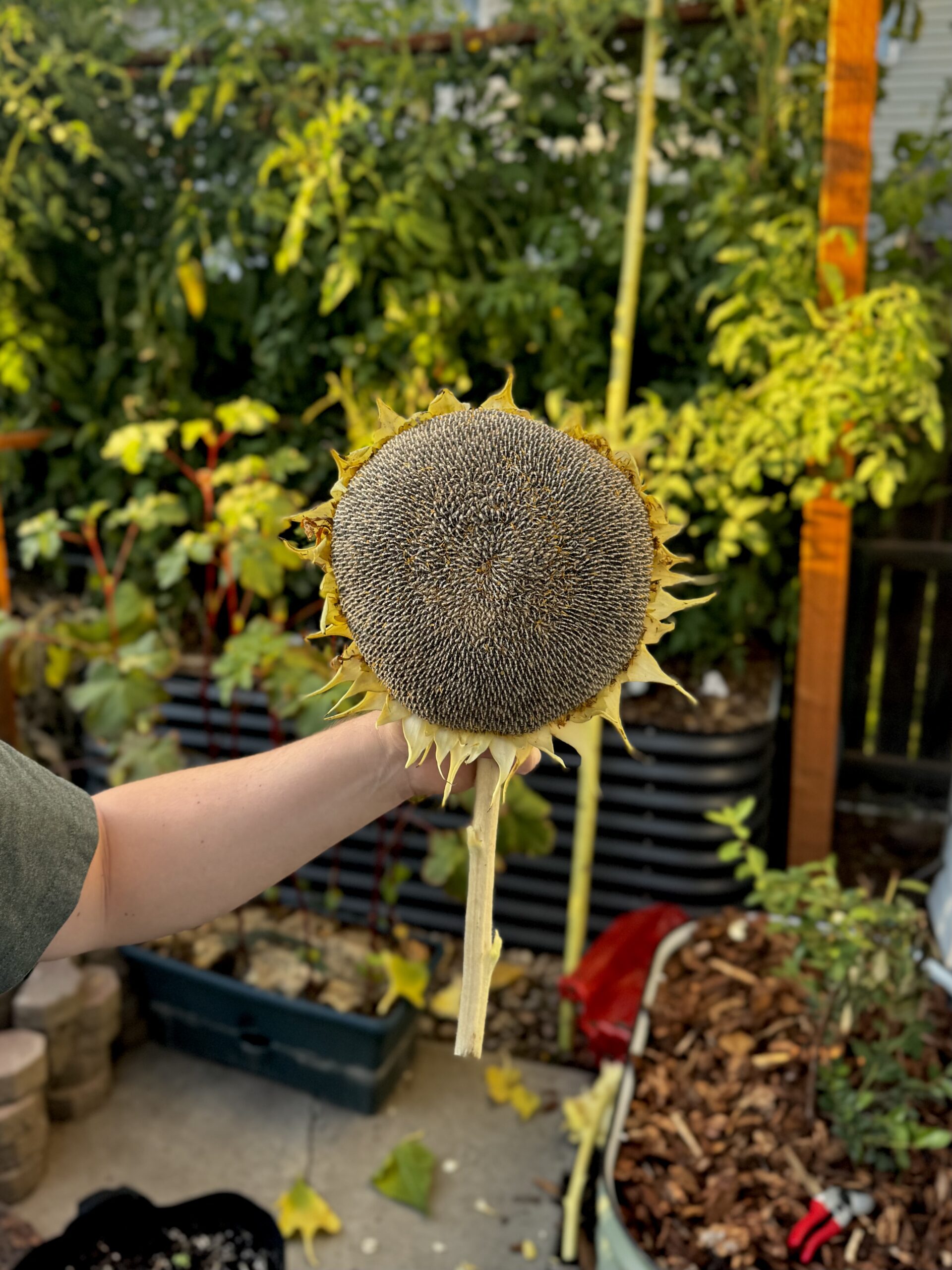
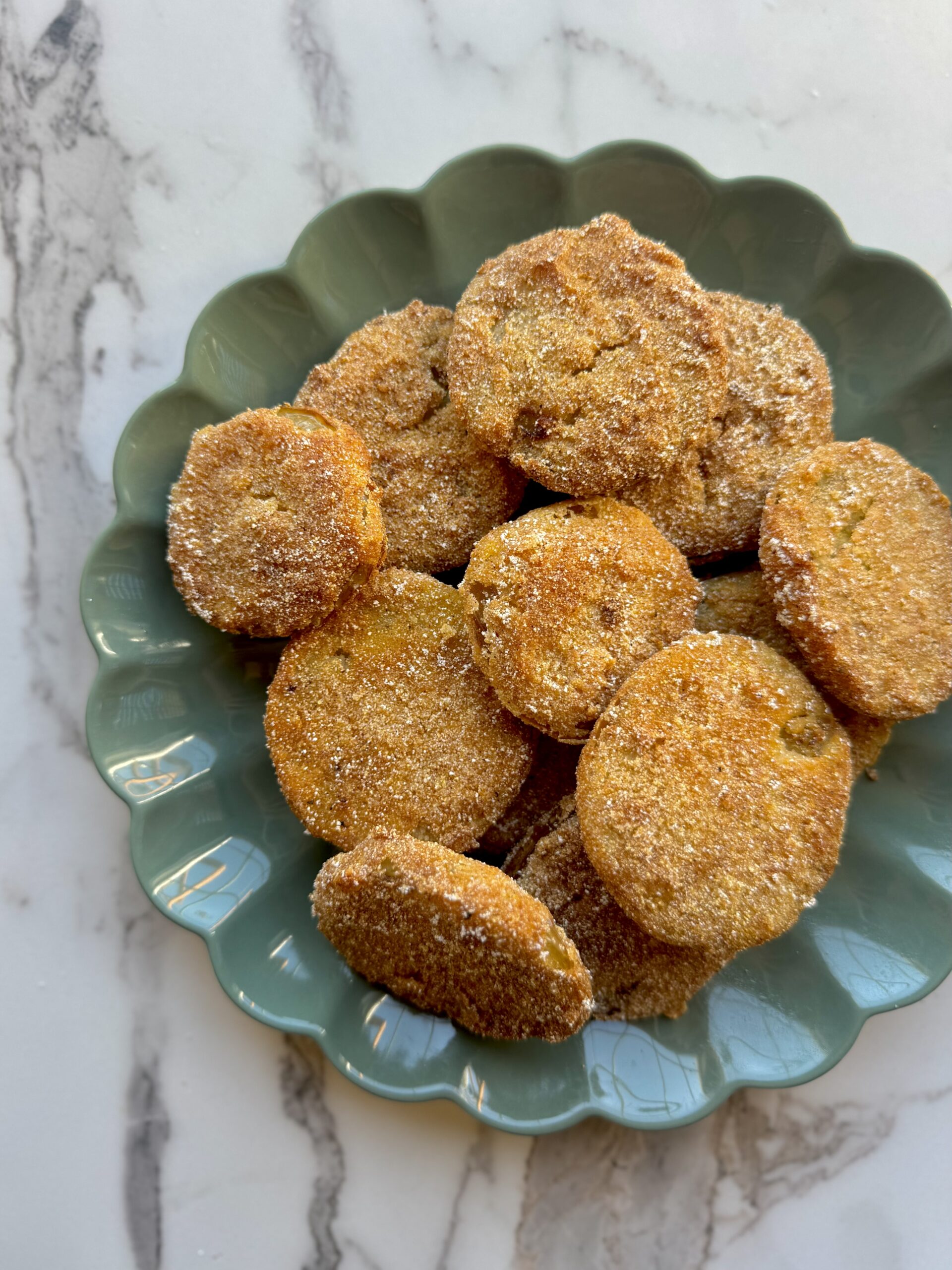
Compacted soil is the worst! Thanks for the tips. You could also consider using biochar.
I finally understood how drainage and compaction affect root growth. Thanks for the helpful breakdown!